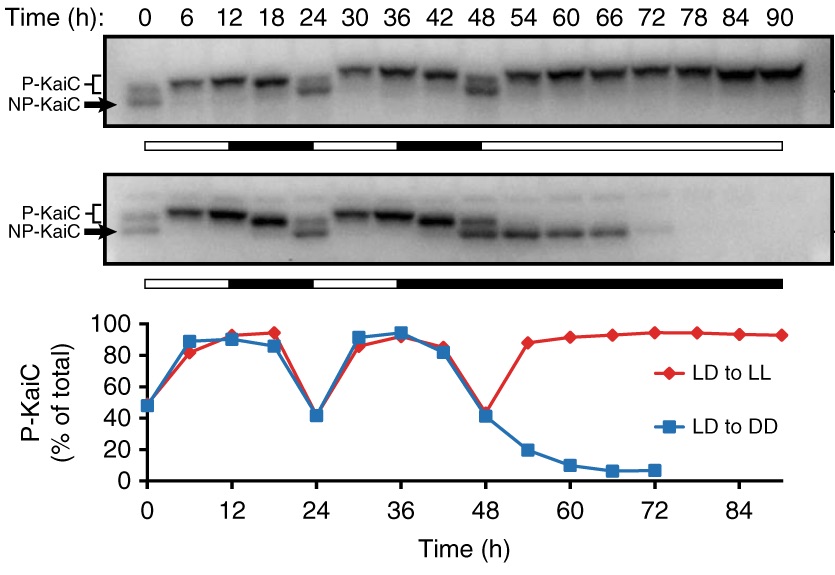





The discovery of the kaiA, kaiB, and kaiC genes in cyanobacteria showed unambiguously that some bacteria have a true circadian clock, long thought to be a complex form of physiology limited to eukaryotes. Subsequent analysis of genome sequences has shown that, while all 3 genes are only found together in cyanobacteria, many other bacterial and archaeal species have kaiC and kaiB homologues, including human and plant pathogens. Though they are widespread, very little is known about the function of these genes. We are exploring the hypothesis that many prokaryotic species may have physiology that depends on the time of day.
An intriguing clue comes from the cyanobacterial clade Prochlorococcus. These bacteria lack the kaiA gene, thought to be the most evolutionarily recent of the clock genes. We saw that KaiC in these bacteria acts like an "hourglass" rather than a clock, that is, rhythms do not persist if the environmental input of dawn and dusk is absent.
